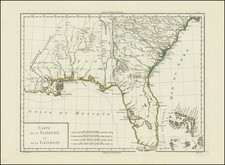Qua solennitate Regina a Rege excipiatur, a captivating image engraved by Theodor De Bry and released in Frankfurt in 1591, captures an indigenous Floridian dance and is featured prominently within De Bry's renowned Grands Voyages. This original engraving emphasizes the ceremonial encounter of a queen with her king and elucidates the complex cultural rituals practiced by Florida's indigenous peoples during the late 16th century.
At the cusp of the 17th century, Europe's nascent encounters with the New World spurred not only an insatiable curiosity for the geography of these unfamiliar lands but also a fervent interest in its peoples, customs, and ways of life. De Bry, through his Grands Voyages, was instrumental in shaping European perceptions of the New World. His engravings, based on primary sources and firsthand accounts, served as windows into the lives, customs, and environments of indigenous populations.
This image portrays a distinct ceremony, focusing on the moment the queen meets the king. An elaborate wooden platform is erected for this purpose, with ample space for the dignitaries. The king, seated to the right of this stage, warmly welcomes the queen, positioned opposite him on the left, elucidating his reasons for choosing her as his primary wife. With a modest yet majestic demeanor, she responds, holding a fan, her expressions and gestures a testament to her nature-derived grace. Surrounding this central scene, young women form a circle, distinct in their attire, with bound hair flowing down their backs and wide belts adorned with ovular gold and silver patterns creating a sonorous rattle during their dances in praise of the king and queen. Their movements—synchronized lifting and lowering of limbs—highlight the cohesive harmony of their ritual. Both men and women showcase distinct ear piercings, wherein elongated fish bladders, inflated to resemble pearls and dyed a striking red, draw an uncanny resemblance to the faint hues of rubies.
The nuanced details in this engraving not only shed light on the sophisticated ceremonial practices of Florida's indigenous people but also attest to the meticulous observation and dedication with which De Bry approached his work. The intrigue of this piece lies not only in its representation of an exotic ritual to European audiences but also in its deeper, almost anthropological insights. This image, as with other works from Grands Voyages, stands as a testament to the interplay of exploration, representation, and cultural understanding in early modern Europe.
De Bry's Engravings of the Florida Indians
For his Grands Voyages, De Bry engraved 42 plates based Le Moyne's original sketches made during the French Huguenot voyage to the Florida Peninsula. De Bry's renderings of Florida and its inhabitants are today the earliest known printed European images of Native Americans in present-day Florida, known as the Timucua Indians.
The images attempt to convey a number of messages about the land and its peoples. For example, some of the plates have been suggested to represent the ability of the Timucua to obey authority and that they are less sophisticated than the Europeans. This was argued to make them ideal candidates for French Huegonot colonization, to be used in conflicts against Catholic Spain.
The accuracy of De Bry's depictions have sometimes been called into question. Some of the engravings do not quite match what became known about the Timucua by later French explorers, and some engravings possess out-of-place features, such as the appearance of a Pacific nautilus rather than a Florida whelk shell. However, it is believed that the core of the imagery is correct. For example, the depiction of Timucuan body art, otherwise unknown to Europeans at the time, suggest that De Bry's depictions were grounded in reality.
Theodor de Bry (1528-1598) was a prominent Flemish engraver and publisher best known for his engravings of the New World. Born in Liege, de Bry hailed from the portion of Flanders then controlled by Spain. The de Brys were a family of jewelers and engravers, and young Theodor was trained in those artisanal trades.
As a Lutheran, however, his life and livelihood were threatened when the Spanish Inquisition cracked down on non-Catholics. De Bry was banished and his goods seized in 1570. He fled to Strasbourg, where he studied under the Huguenot engraver Etienne Delaune. He also traveled to Antwerp, London, and Frankfurt, where he settled with his family.
In 1590, de Bry began to publish his Les Grands Voyages, which would eventually stretch to thirty volumes released by de Bry and his two sons. The volumes contained not only important engraved images of the New World, the first many had seen of the geographic novelties, but also several important maps. He also published a collection focused on India Orientalis. Les Grands Voyages was published in German, Latin, French, and English, extending de Bry’s fame and his view of the New World.









![[ Virginia Natives ] Fictilium Vasorum In Quibus Cibum Coquunt Forma XV [Their Seething of Their Meat in Earthen Pots]](https://storage.googleapis.com/raremaps/img/small/98700.jpg)
![[Tampa] Perfecto Garcia & Bros. Clear Havana Cigars](https://storage.googleapis.com/raremaps/img/small/87436.jpg)
![[ Death of a Florida Indian Chief ] Ceremoniae in Regis & Sacerdotum funere observatae. XL.](https://storage.googleapis.com/raremaps/img/small/97768.jpg)


![[ Florida Native Americans ] Mulierum, quarum maritivel in bello caesi, aut morbo sublati posulata a Rege. XVIII.](https://storage.googleapis.com/raremaps/img/small/98052.jpg)